Prince Henry the Navigator
Prince Henry the Navigator was one of medieval Portugal's most famous people, kickstarting the country's voyages that would for a time mark it as the leader of the Age of Exploration. He was born on March 4, 1394, in Porto. His father was the reigning monarch, John I, and his mother was Philippa of Lancaster. 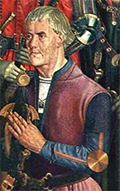
Henry was not his father's oldest son. That was Edward, the heir apparent and later King Edward. Henry had another older brother, Peter, and so Henry knew that he was probably not going to be king. He had other pursuits and responsibilities, though. An apt administrator, he gained appointment as governor of the large province the Algarve in 1419. The following year, Henry earned another appointment, as Grand Master of the Military Order of Christ, formed by King Dinis in 1319 as a haven for persecuted members of the Knights Templar. 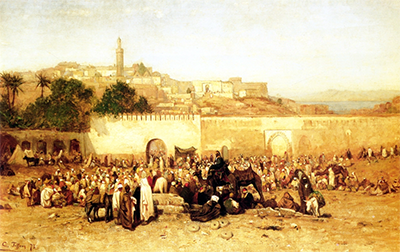
Looking outward, Henry encouraged his brother Edward the king to authorize an invasion of Tangier in 1437. Portuguese forces had seized the North African coastal settlement of Ceuta in 1415 (an engagement in which Henry distinguished himself militarily) but had watched that town's importance dwindle as traders passed it by in favor of Tangier. A large Portuguese force besieged the city and assaulted it multiple times, without success. In fact, a relief army arrived and encircled the Portuguese, turning the besiegers into the besieged. Henry eventually agreed to give up Ceuta and his own youngest brother, Ferdinand, as long as the Moroccan army would let the Portuguese army go home without incident. When their brother Edward died, in 1438, Henry supported Peter in his bid for the regency of Edward's 6-year-old son, Afonso. Peter eventually worked out a partnership agreement with Philippa. In turn, Peter supported Henry's expeditions. 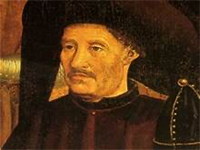
Henry had a strong interest in many things, including geography, science, sailing, and exploration. He implored his brother Peter to bring him related materials during a 1425 tour of Europe; among the things that Peter brought back was a current world map. Henry planned and outfitted numerous voyages of exploration and conquest, into the Atlantic Ocean and down the western coast of Africa. He also championed the expansion of knowledge in geography, mapmaking, and navigation, in part by requiring his sailors to keep detailed records of the conditions they faced on their voyages. At that time, no Europeans had sailed beyond Cape Bojador, a place on the western coast of Africa that was so treacherous to sailing ships that it was called the "Sea of Darkness." Henry wanted his sailors to go past that point, and it was an expedition led by Gil Eannes in 1434 that finally did. Eannes it was who named one river he saw the Rio de Ouro (River of Gold). 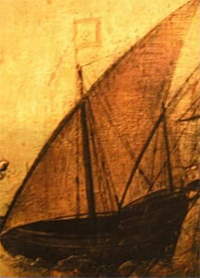
Henry pioneered the use of a new ship called the caravel, a light and maneuverable vessel like no other of its time, in large part because of its triangle-shaped lateen sails. Voyages set out for and came back from Madeira and the Azores and ever southward toward the bottom of the African continent. Portuguese sailors learned how to take advantage of the trade wind patterns, paving the way for future voyagers from all over Europe. Also importantly, the voyages down the western coast of Africa allowed Portugal access to trade routes denied them in Morocco (principally the west African gold and slave trades), making the failures at Tangier and the loss of Ceuta inconsequential in the long run. Henry also sponsored explorations of Africa that resulted in the beginning of Portugal's slave trade, which expanded quickly and expansively. In the process, Henry became very rich. At one point, he earned every bit of profit from the country's soap trade. He also benefited from a percentage of the takings of voyages that returned with money and other prize goods. Another goal of Henry's voyages was to find evidence of the existence of Prester John, a legendary Christian ruler whose kingdom was said to be in various places–in Africa or in Asia or somewhere else entirely. This fit in with Henry's devout Christian practice, which also drove him to countenance religious conversion as a motive for exploration. 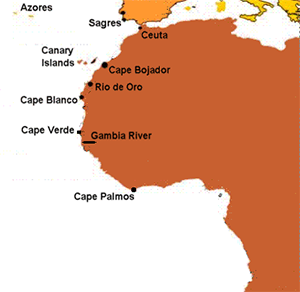
Henry continued to organize and sponsor voyages, as his sailors pushed farther and farther south and, in the process, further into the African interior. Antao Gonçalves and Nuno Tristao brought back riches, including slaves. Other explorers ranging ever southward included Alvise da Cadamosto and Diogo Gomes, who went as far south as Cape Palmas. 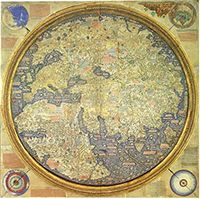
Henry was indeed a navigator, meticulously planning dozens of voyages to places west and south. However, he was not a sailor and played no part in the actual undertakings once the ships left Portuguese ports. In fact, the appellation by which he is most well-known was granted him long after he was gone. The title Henry the Navigator first appeared in the 19th Century. Henry's nephew became King Afonso V in 1438 and continued his father's support of Henry's expeditions. In 1457, Afonso commissioned the production of a world map known as the Fra Mauro Map. He sent it to Henry in 1459. Henry died on Nov. 13, 1460, at Sagres, in Portugal. He was 66. He had not married and had no children.
|
|
Social Studies for Kids
copyright 2002–2025
David White




